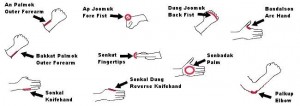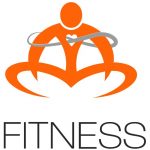Question One
Name the all of the patterns you have learnt and how many moves in each?
• Dan-Gun (21 Moves)
• Do-San (24 Moves)
• Won-Hyo (28 Moves)
• Yul-Gok (38 Moves)
• Joong-Gun (32 Moves)
• Toi-Gye (37 Moves)
• Hwa-Rang (29 Moves)
Question Two
What was Hwa Rang?
Question Three
Why are there 29 movements in Hwa Rang?
Question Four
Name the six factors involved in producing power.
• Reaction Force
• Speed
• Balance or Equilibrium
• Breath Control
• Concentaion Control
.
Question Five
Name and show all the stances you know.
• Charyot sogi (Attention stance)
o Feet form a 45° angle
• Narani sogi (Parallel stance)
o 1 Shoulder width measured Outside to outside
• Annun sogi (Sitting stance)
o 1½ Shoulder width measured Inside to inside
• Gunnun sogi (Walking stance)
o 1 Shoulder width centre of feet, 1½ Shoulder width long measured Toe to Toe
o Front foot points forward, rear foot pointing outward by 25°
o Weight distributed 50% front leg and 50% rear leg
• Nachuo sogi (Low stance)
o 1½ Shoulder width long measured Heel front foot to Toes rear Foot
o Weight distributed 50% front leg and 50% rear leg
• Niunja sogi (L stance)
o 1½ Shoulder width measured Toes to outside rear foot
o Toes of both feet point in by 15°
o Weight distributed 30% front leg and 70% rear leg
• Gojung sogi (Fixed stance)
o 1½ Shoulder width measured Toes to inside rear foot
o Toes of both feet point in by 15°
o Weight distributed 50% front leg and 50% back leg
• Guburyo sogi A (Bending stance A)
• Kyocha sogi (X-stance)
• Dwitbal sogi (Rear foot stance)
o 1 Shoulder width measured Toes to outside rear foot
o Toes of front foot point in by 25°, Toes of rear foot point in by 15°
• Soojik sogi (Vertical stance)
o 1 Shoulder width measured Toes to inside rear foot
o Toes of both feet point in by 15°
Question Seven
Name three techniques using fingertips.
• Flat Fingertip Thrust (Opun Sonkut Tulgi)
• Upset Fingertip Thrust (Dwijibun Sonkut Tulgi)
Question Nine
Demonstrate Yopcha jirugi (Side Peircing Kick) and name the part of the foot you use. (Juniors use pad, Seniors use breaking boards)
Question Ten
Demonstrate Dollyo Chagi (Turning Kick) and name the part of the foot you use. (Juniors use pad, Seniors use breaking boards)
Question Eleven
Demonstrate Bandae Dollyo Chagi (Reverse Turning Kick) and name the part of the foot you use. (Juniors use pad, Seniors use breaking boards)?
PRACTICAL
1) Pattern Hwa-Rang see patterns
2) Be prepared to perform any of the previous grade patterns
3) One step sparring
4) Free sparring
5) Two Verses One sparring
6) Self defence techniques
7) Demonstrate Left and Right Side kick against a target
8) Adults attempt breaking a focus board using Left and Right Side kick
9) Demonstrate Left and Right Turning kick against a target
10) Adults attempt breaking a focus board using Left and Right Turning kick
11) Demonstrate Left and Right Reverse Turning kick against a target
12) Adults attempt breaking a focus board using Left and Reverse Right
Turning kick
* Note this is the minimum requirement for this grade, you may be asked to
perform other techniques learnt during class.




